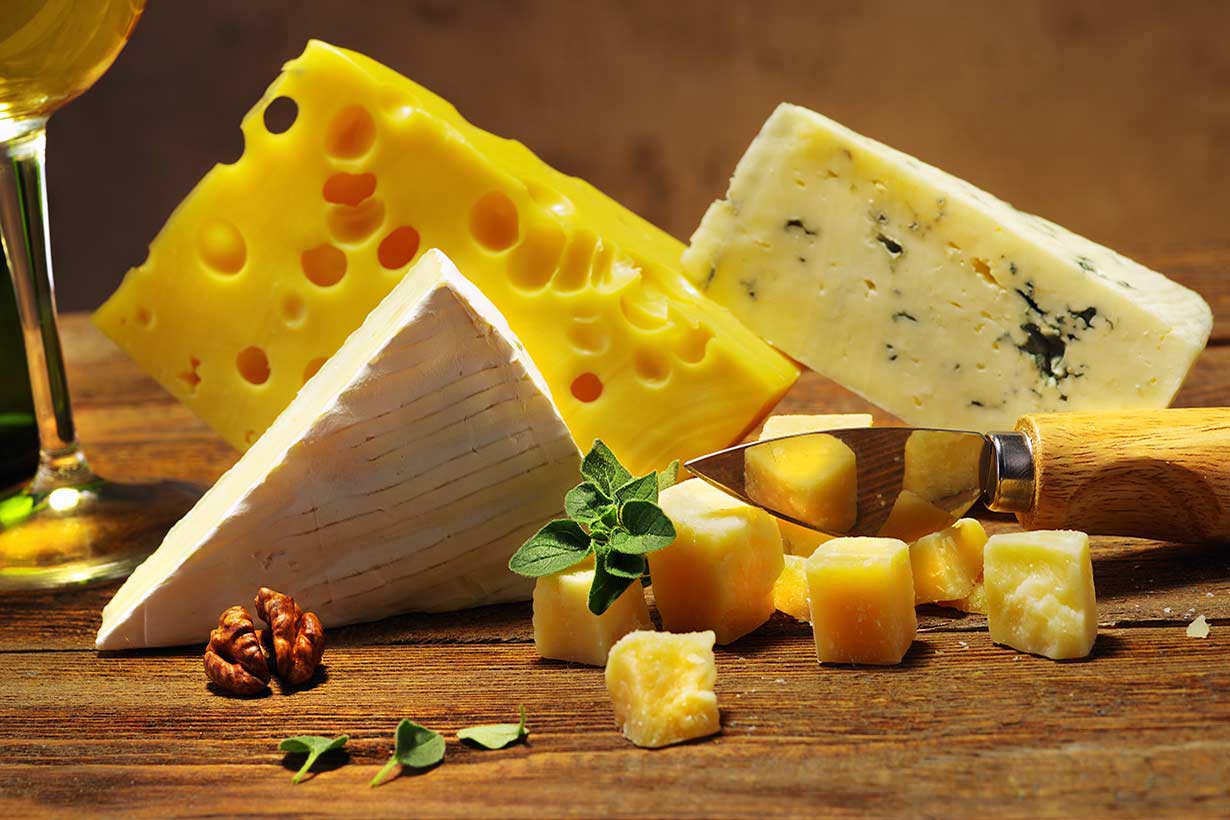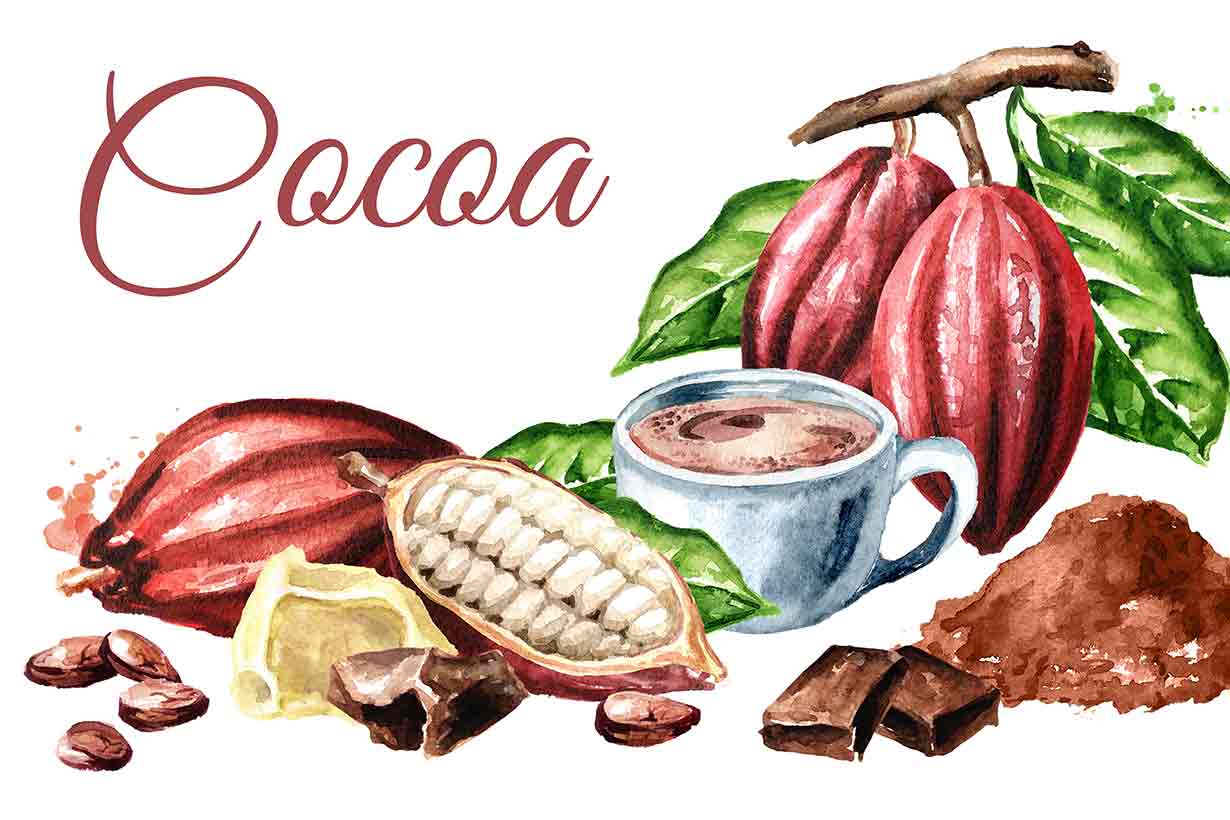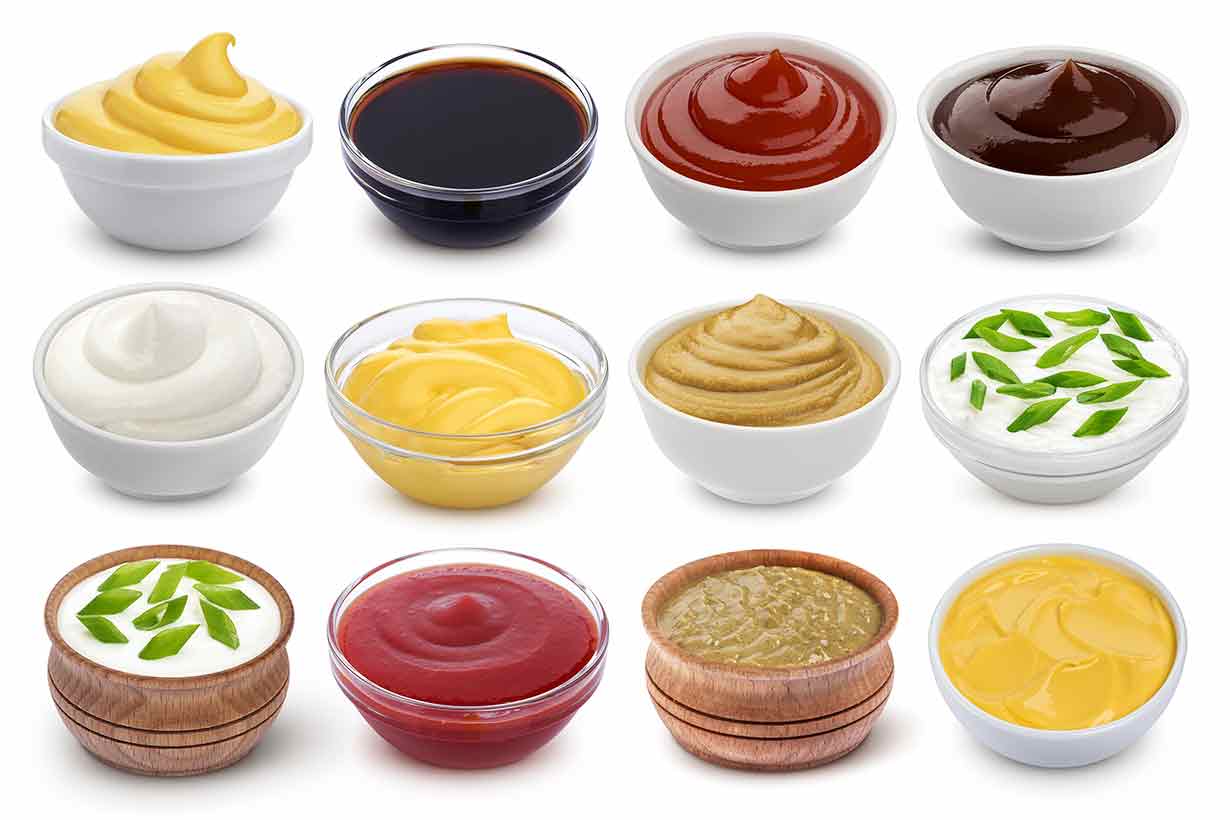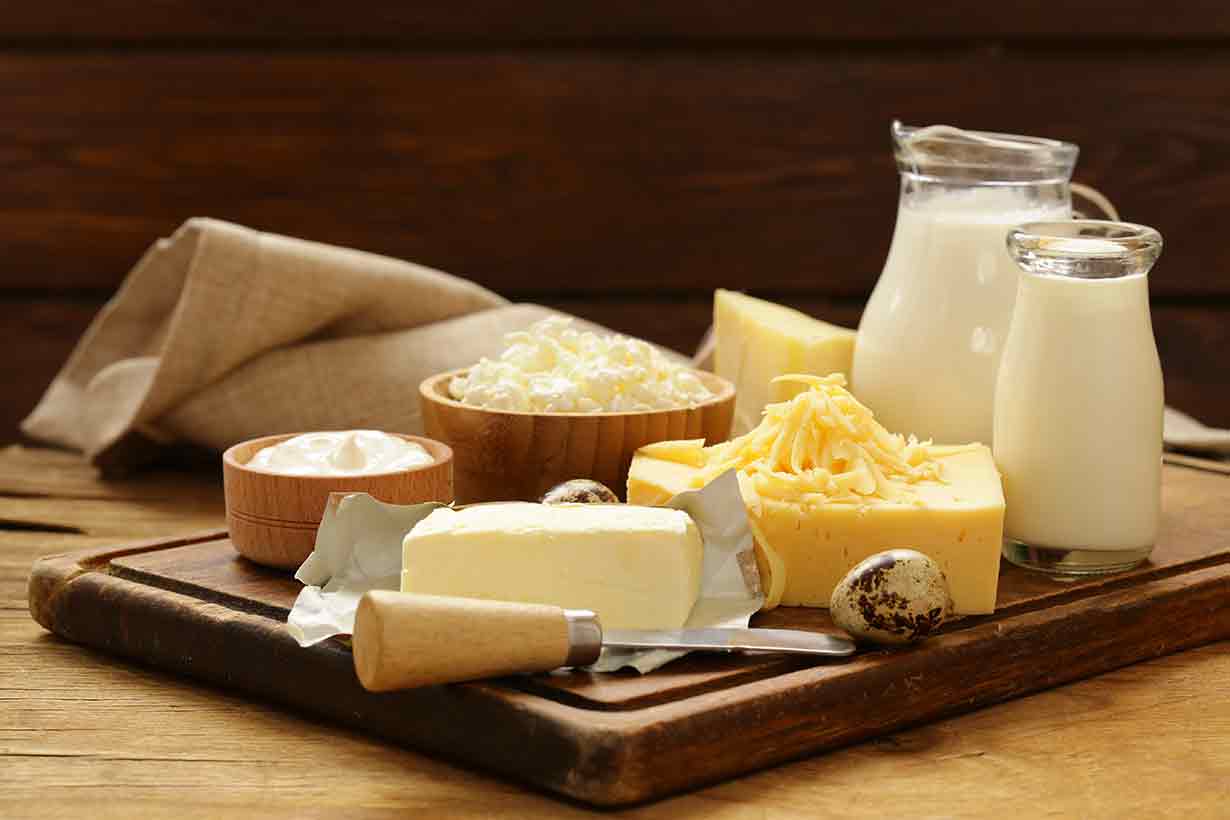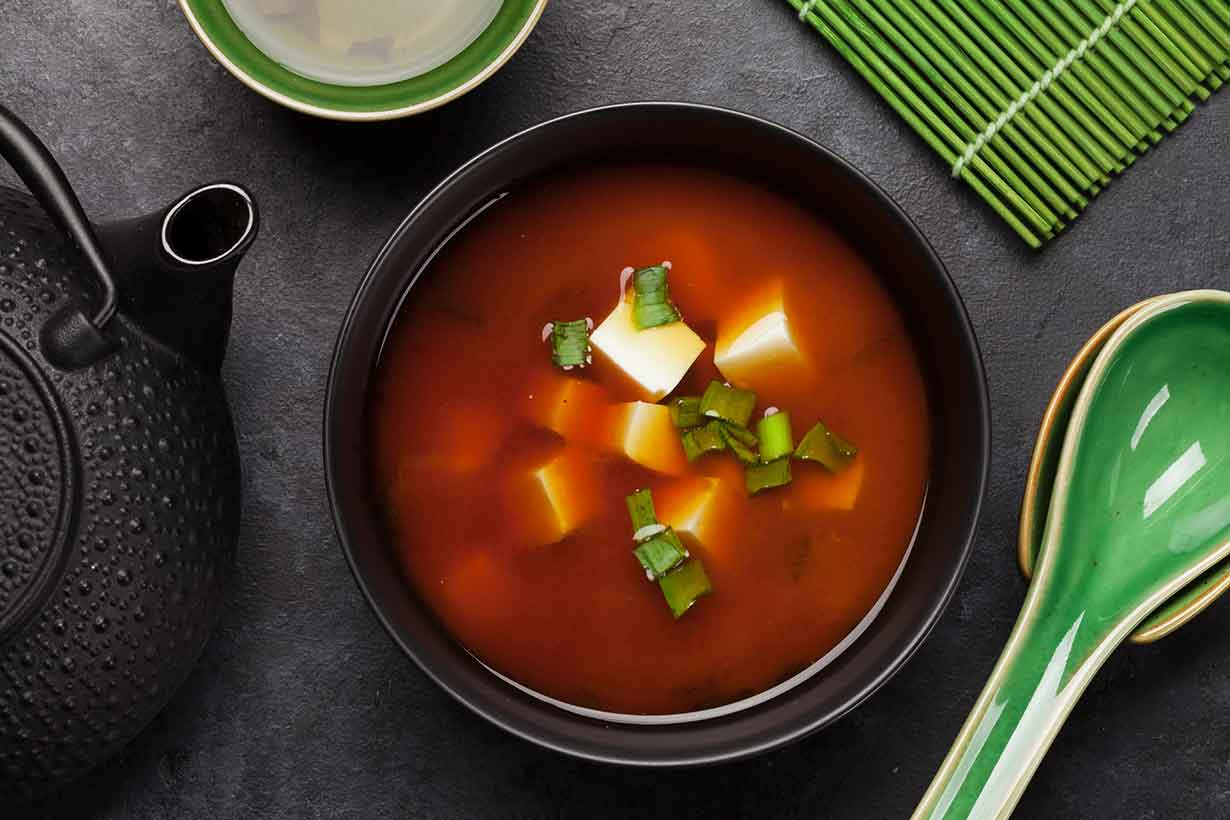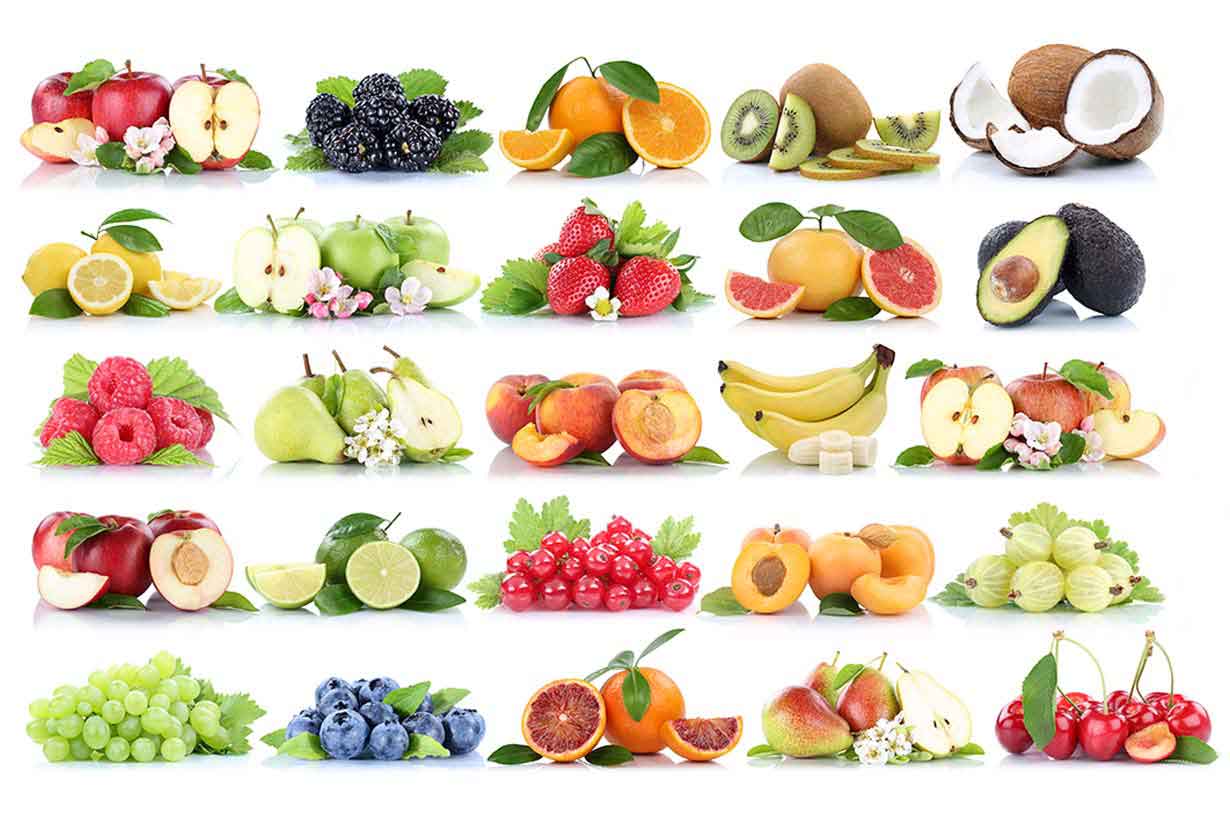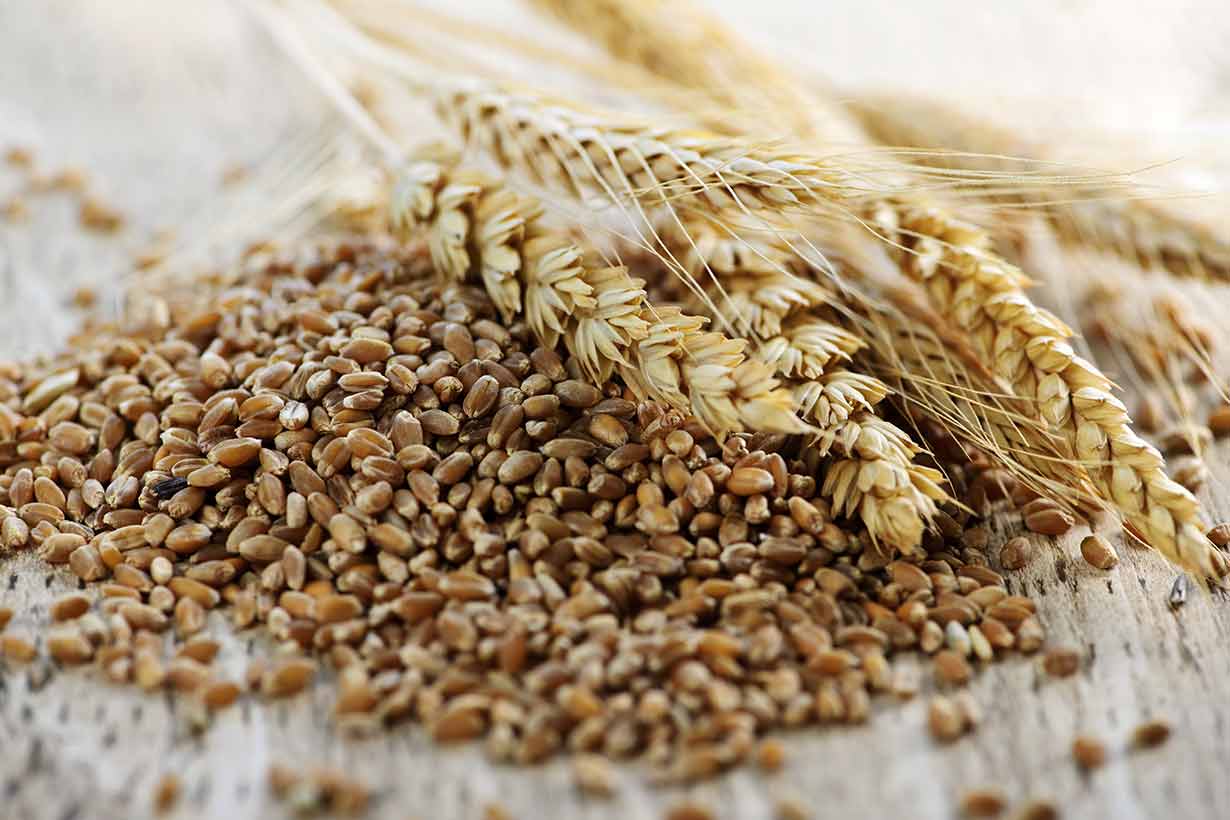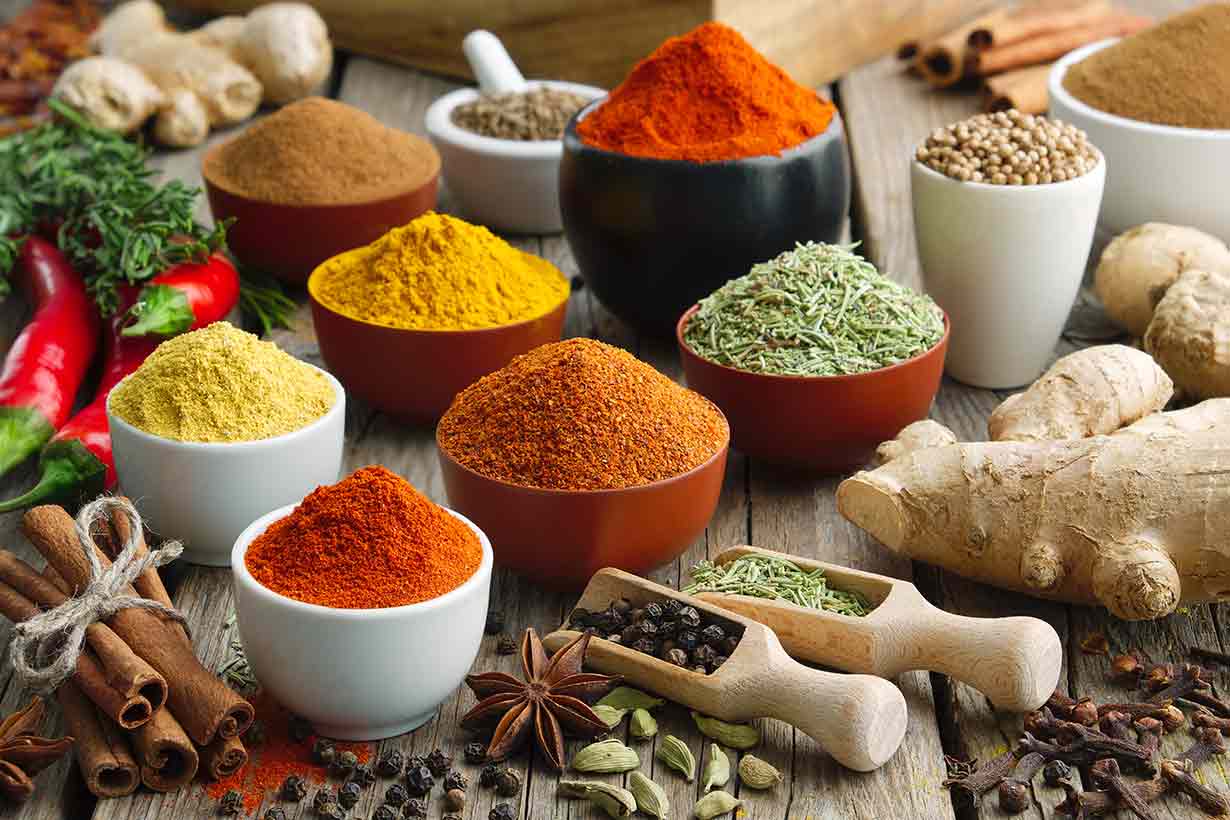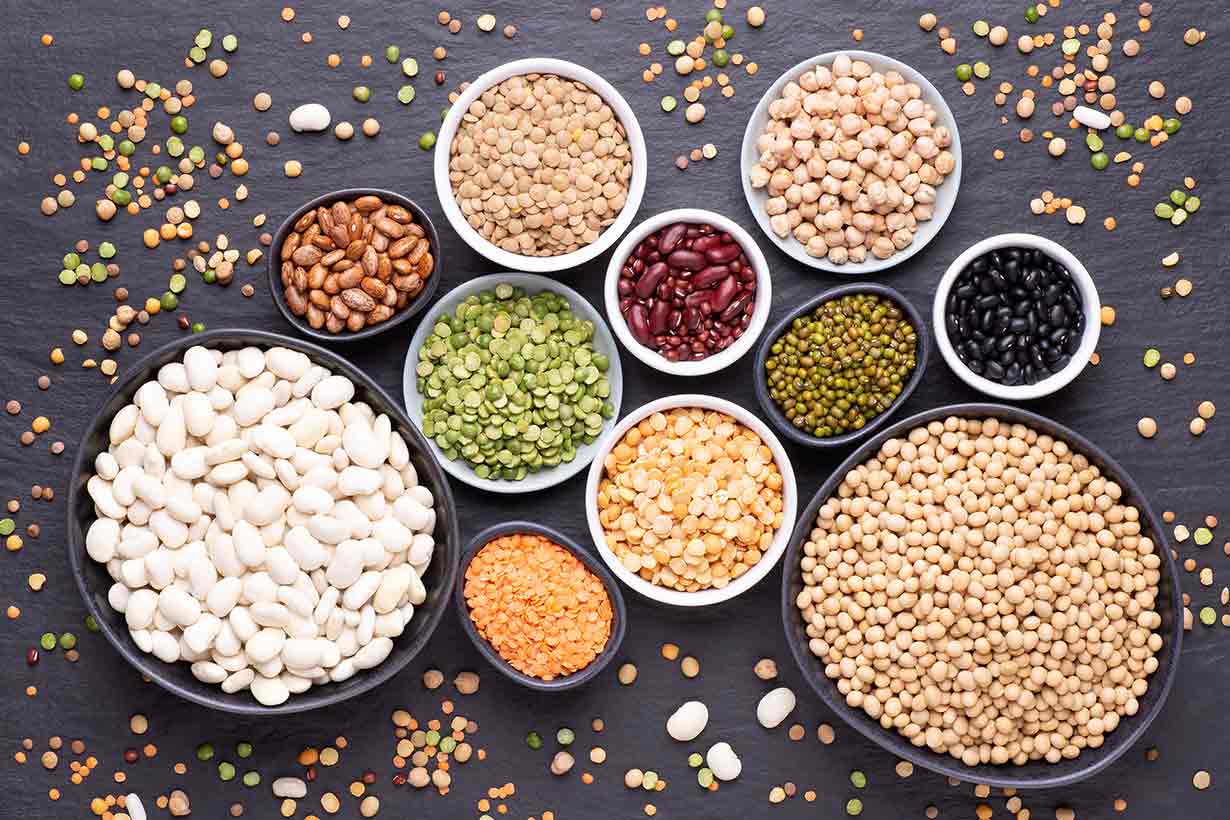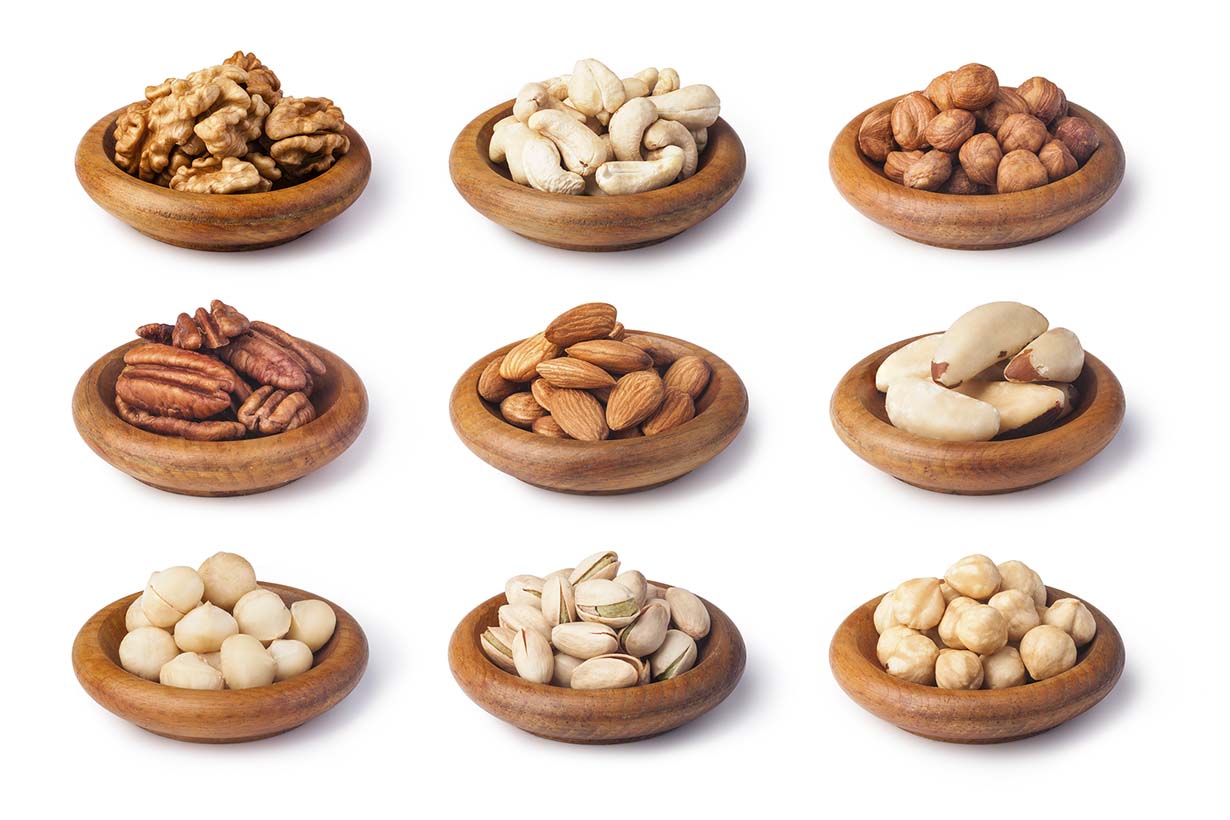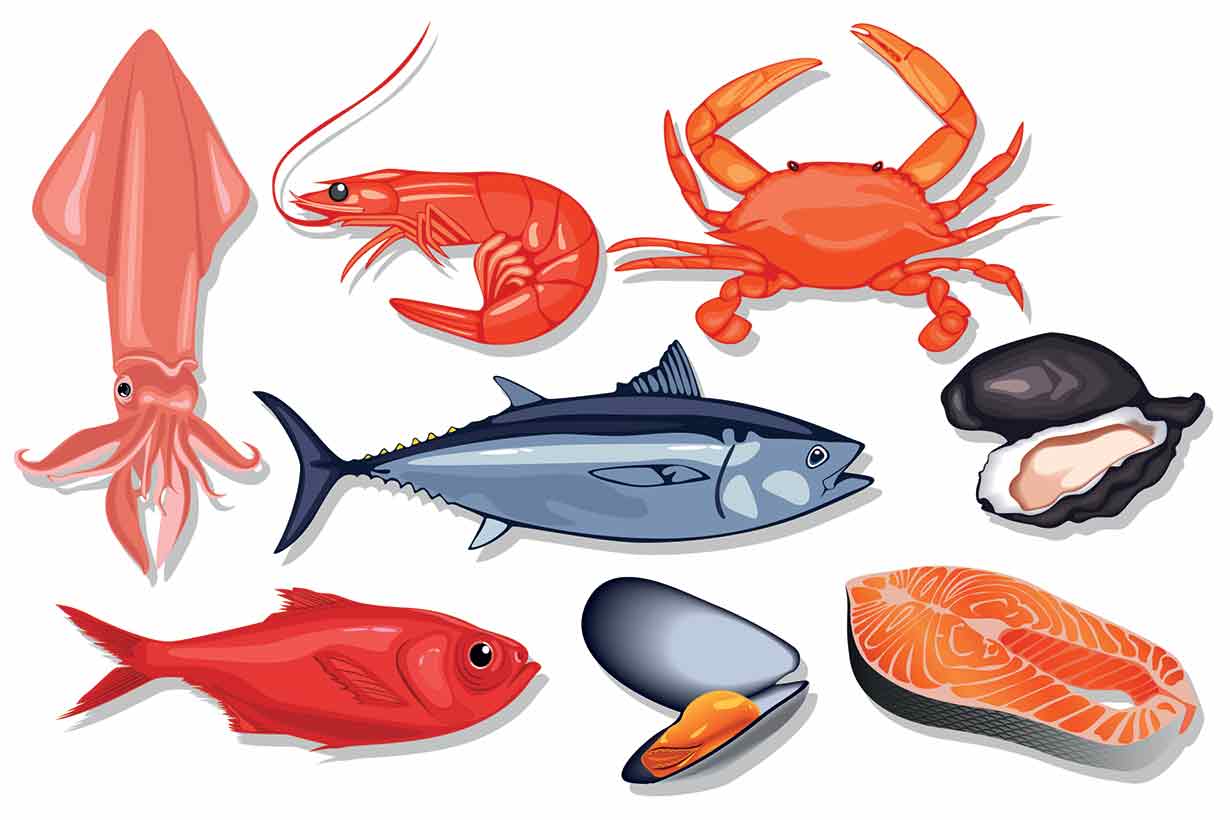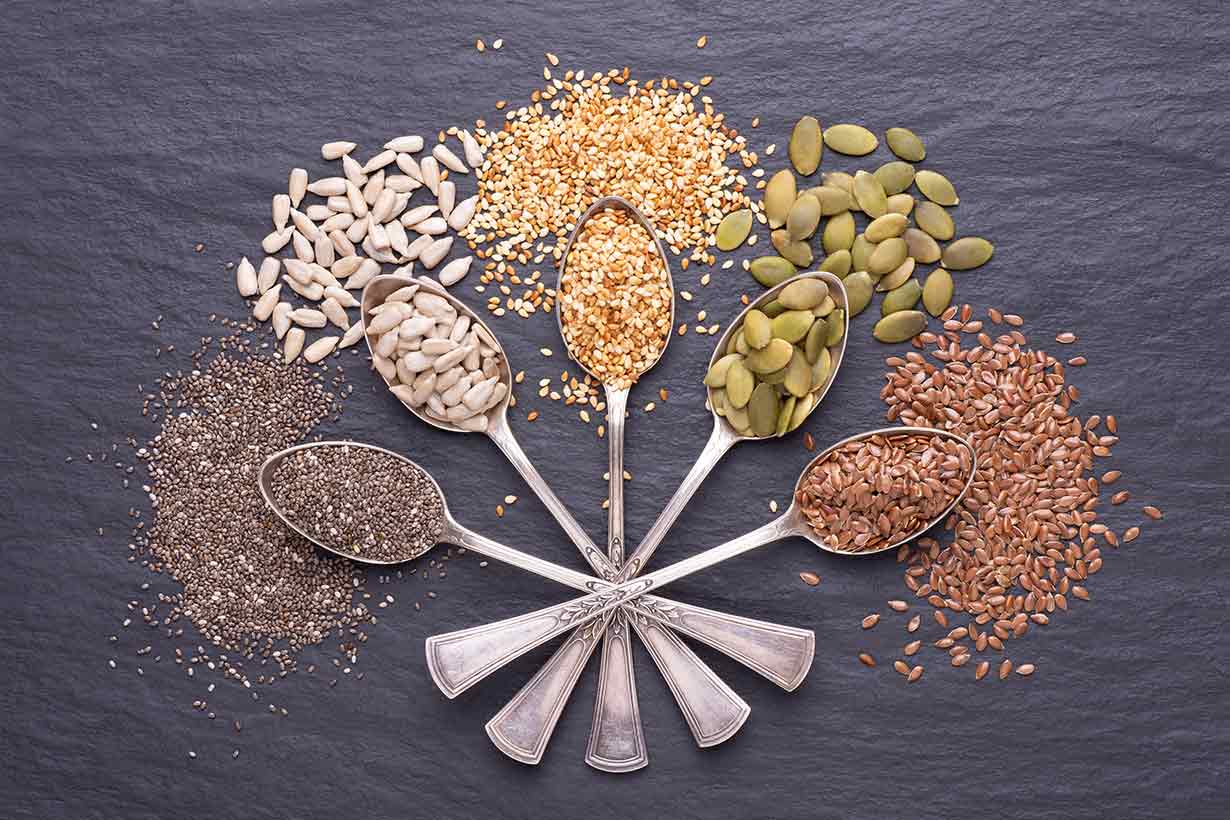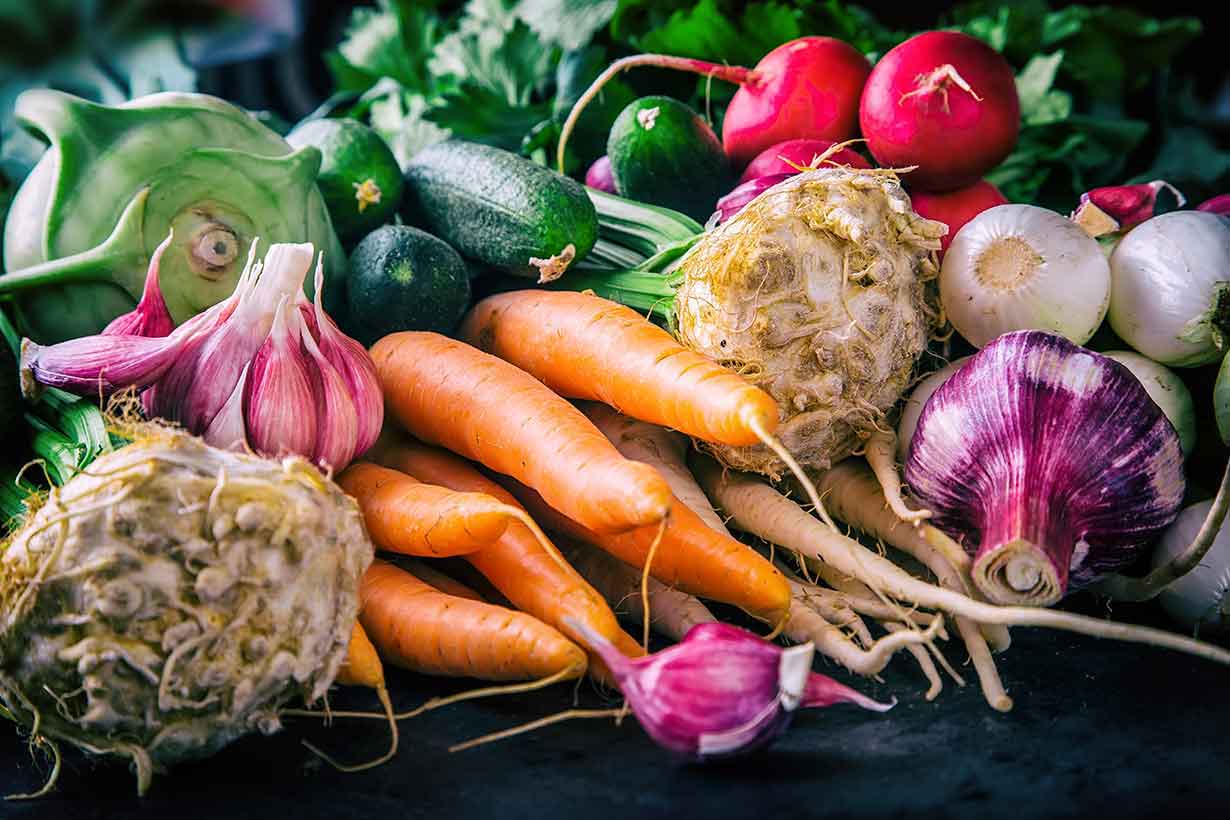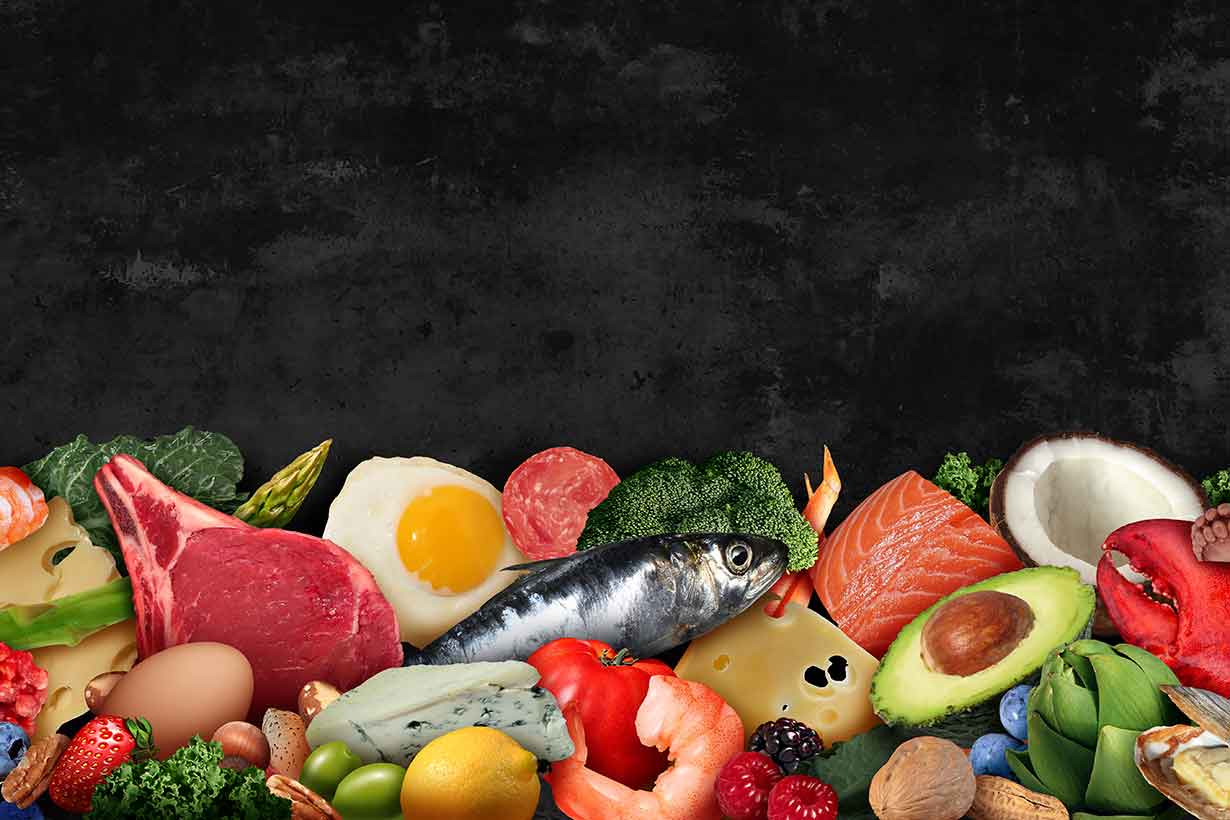There are so many different types of foods out there, and they all vary significantly in nutritional value.
To help you learn more, this article provides an in-depth guide to the major types of food, with notable examples and major nutrients listed for each group.
Table of contents
- 1) Cheese
- 2) Cocoa Products
- 3) Condiments
- 4) Cooking Oils and Fats
- 5) Dairy
- 6) Eggs
- 7) Fermented Foods
- 8) Festive Foods
- 9) Flour
- 10) Fruit
- 11) Grains
- 12) Herbs and Spices
- 13) Legumes
- 14) Meat
- 15) Mushrooms
- 16) Nutrient-Dense Foods
- 17) Nuts
- 18) Oily Fish
- 19) Plant-Based Proteins
- 20) Processed Foods
- 21) Seafood
- 22) Seeds
- 23) Ultra-processed Foods
- 24) Vegetables
- Final Thoughts
1) Cheese
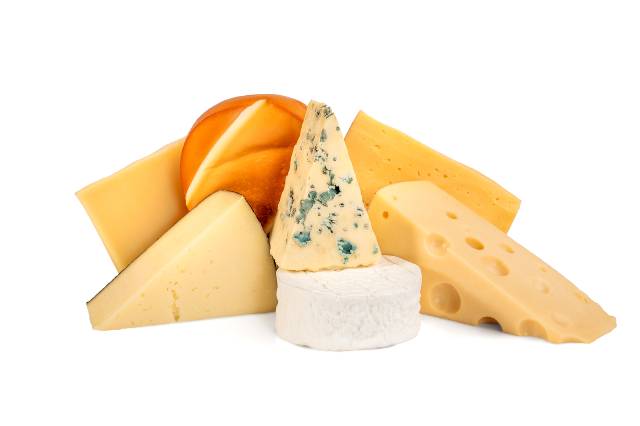
Although it should really come under ‘dairy,’ there are just so many varieties of cheese to explore, each with their own unique characteristics.
Cheese is delicious, and it is one of the most versatile foods, featuring in everything from cakes, sandwiches, and cheese platters to burgers, pasta, pizza, and even salads.
While most of us have our own favorites, there are literally thousands of different cheese varieties around the world.
Cheese tends to be one of the best dietary sources of calcium, and it is generally a rich source of protein too (1).
- Notable examples: Brie, Cheddar, Cottage cheese, Edam, Gorgonzola, Parmesan
- Lesser-known options: Gammelost, Paneer, Quark, Stilton
- Key nutrients: Calcium, phosphorus, selenium, vitamin A
Learn more: 49 Types of Cheese and Their Nutrition Facts
2) Cocoa Products
Chocolate, the most well-known cocoa product, is among the most popular foods in the world.
However, a surprising number of cocoa-based foods exist that you may not know about.
These foods range from typical bars of milk and dark chocolate to brewed cocoa, cocoa butter, and even cocoa nibs, which are fragments of the whole cocoa bean.
It may come as a surprise to some people, but cocoa is packed full of essential nutrients, containing particularly high amounts of fiber and magnesium (2). However, we should be mindful with our choices of cocoa products because some are high in sugar, fat, and calories.
- Notable examples: Chocolate milk, dark chocolate, hot chocolate, milk chocolate
- Lesser-known options: Brewed cocoa, cacao nibs, cocoa butter, ruby chocolate
- Key nutrients: Copper, magnesium, manganese
Learn more: 11 Types of Chocolate and Cocoa Products: Nutrition & Characteristics
3) Condiments
Condiments are flavor-enhancing foods added to dishes.
Common condiments include sauces, such as ketchup, mayonnaise, and mustard. However, the ‘condiments’ classification is very wide and can include everything from guacamole and red wine vinegar to sweet sauces, such as Nutella.
According to recent sales data, mayonnaise is the most popular condiment in the United States, with annual sales worth $2 billion (3).
- Notable examples: Guacamole, ketchup, mayonnaise, mustard
- Lesser-known options: Kypolou, muhammara, ssamjang
- Key nutrients: Nutrient provision varies, but condiments are often high in sodium from salt
Learn more: 36 Types of Condiments: Nutrition & Characteristics
4) Cooking Oils and Fats

There are dozens of different cooking oils used in kitchens around the world.
All types of cooking fat provide a large amount of calories and dietary fat.
But what differentiates each cooking oil is its respective fatty acid ratio—the amount of saturated, monounsaturated, and polyunsaturated fats present.
While some cooking fats are mainly saturated fat, such as butter and coconut oil, others, like soybean oil and sunflower oil, are predominantly polyunsaturated fat (4, 5, 6, 7).
Additionally, oils like canola and olive oil are highest in monounsaturated fatty acids (8, 9).
- Notable examples: Butter, coconut oil, olive oil, soybean oil
- Key nutrients: Vitamin E
- Lesser-known options: Macadamia nut oil, red palm oil
Learn more: 25 Types of Cooking Fats and Oils: Nutrition & Characteristics
5) Dairy
Dairy is a wide-ranging food group that features everything from ghee to low-fat milk and protein-rich cheese. As such, dairy foods can fit into a wide range of dietary preferences.
For example, dairy products can be low-fat (skim milk), high-fat (butter), fermented (kefir), and high-protein (whey).
- Notable examples: Butter, cheese, milk, yogurt
- Lesser-known options: Ayran, clotted cream, skyr, uunijuusto
- Key nutrients: Calcium, phosphorus, selenium, vitamin A
Learn more: 27 Types of Dairy Products: Nutrition Facts and Characteristics
6) Eggs
Although many people consider eggs to be just one food, there are actually a surprising number of different eggs available.
This ranges from regular chicken eggs to tiny quail eggs and large turkey eggs. Even fish roe—a type of seafood—is an egg product.
Eggs contain a wide range of nutrients, and they offer significant levels of protein, choline, selenium, and vitamin D.
- Notable examples: Chicken eggs
- Lesser-known options: Goose eggs, turkey eggs
- Key nutrients: Choline, riboflavin (B2), selenium, vitamin D
Learn more: 5 Types of Eggs: Nutrition Facts & Characteristics
7) Fermented Foods

Fermentation is a centuries-old, traditional approach to preserving food.
For instance, cultures around the world each have their own fermented foods, such as kimchi (Korea), natto (Japan), sauerkraut (Germany), and tempeh (Indonesia). These foods can be desirable in both taste characteristics and nutritional properties.
On the nutritional side, recent research has suggested that fermented food consumption may have some benefits. For instance, biologically active peptides, which are byproducts of fermentation, may have positive effects, including potentially lowering blood pressure (10, 11).
However, fermented foods can also be high in salt, an essential ingredient for their preservation.
Many fermented foods around the world are made from soybeans.
Learn more: 12 Fermented Soy Products: Nutrition & Characteristics
- Notable examples: Cheese, kimchi, natto, sauerkraut, yogurt
- Lesser-known options: Brem, cheonggukjang, cincalok, douchi,
- Key nutrients: Often a good source of probiotics, but the vitamin and mineral content depends on the specific food being fermented.
There are also numerous products made by fermented cabbage.
Learn more: 5 Types of Fermented Cabbage and Their Nutritional Benefits
8) Festive Foods
Festive foods are not one distinct group; they vary around the world depending on the specific culture and type of celebration.
For example, some famous festive foods include roast turkey and stollen at Christmas, rice cakes for lunar new year, and biryani and shemai for Eid.
- Notable examples: Roast turkey, stollen, rice cakes, biryani, shemai
- Lesser-known options: Shuba, kutia, tangyuan, aseeda
- Key nutrients: Variable
Learn more: 11 Traditional Christmas Foods From Around the World
9) Flour
Flour is mainly used for baking purposes and thickening sauces. Most flours are typically made from finely pulverized grains, nuts, seeds, or tubers.
Wheat flour is by far the most popular flour in the world, but several different options have gained popularity over recent years.
Some of the most notable include almond flour and coconut flour. Even flour made from insects—cricket flour—has increased in popularity.
- Notable examples: Almond flour, rice flour, rye flour, wheat flour
- Lesser-known options: Acorn flour, potato flour, tapioca flour
- Key nutrients: Manganese, phosphorus
Learn more: 37 Types of Flour and Their Nutritional Values
10) Fruit
Fruit is popular worldwide, but the types of fruit differ depending on the local climate.
For example, fruits like avocados, bananas, mangos, passion fruit, and pineapple grow in warmer climates.
In contrast, fruits such as apples, pears, peaches, and plums grow in temperate climates, as they require a cold season during the year (12).
Most fruits are a good source of vitamin C, particularly tropical and citrus fruits like lemon, lime, mangoes, and oranges.
- Notable examples: Apple, banana, mango, orange, strawberry
- Lesser-known options: Cherimoya, dragon fruit, durian, star fruit
- Key nutrients: Potassium, vitamin C
Learn more: 55 Types of Fruit and Their Nutrition Facts
11) Grains
Most countries have a few staple grains that are a regular feature in peoples’ diets.
In much of the Western world, wheat enjoys the most popularity, but oats and rice are also common. In contrast, rice is the staple grain for much of Asia.
Whole grains tend to be associated with health benefits, and systematic reviews have linked whole grain intake to a lower risk of cardiovascular and total mortality (13, 14).
They can also be a rich source of fiber, vitamins, and minerals.
A 2020 systematic review and meta-analysis of randomized controlled trials found that replacing refined grains with whole grains improved various health markers, including blood sugar, cholesterol, and markers of inflammation (15).
- Notable examples: Oats, rice, rye, wheat
- Lesser-known options: Fonio, freekeh, sorghum
- Key nutrients: Magnesium, manganese, phosphorus
Learn more: 22 Types of Whole Grains and Their Nutritional Values
12) Herbs and Spices
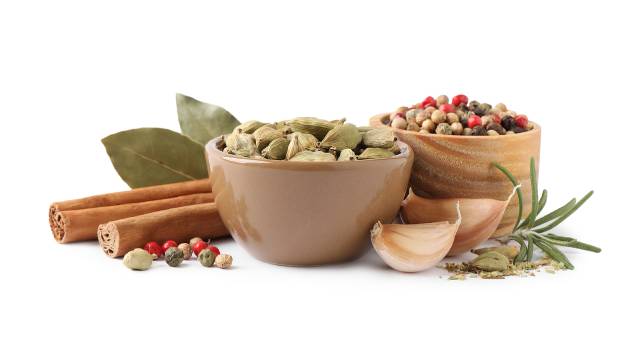
Herbs and spices can add a lot of flavor to home-cooked foods and make a healthier way of eating more enjoyable.
The word ‘herb’ tends to be used to describe plant leaves such as basil, rosemary, and thyme, whereas ‘spice’ typically describes other parts of the plant, such as turmeric (root) and cumin (seed).
Herbs and spices are extremely rich in vitamins, minerals, and bioactive compounds like polyphenols. However, since they are used in relatively small amounts, they don’t contribute a large proportion of essential nutrients to the average diet.
- Notable examples: Basil, cumin, rosemary, turmeric
- Lesser-common options: Grains of paradise, nigella, sumac
- Key nutrients: This will vary depending on the specific herb or spice, but they are usually high in manganese and potassium
Learn more: 50 Types of Herbs and Spices: Characteristics & Uses
13) Legumes
‘Legume’ refers to the edible fruit or seed of species belonging to the Fabaceae family of plants (16).
Some commonly consumed legumes include chickpeas, edamame, lentils, peas, and soybeans.
Interestingly, legumes can have varying nutritional properties, with some—like soybeans—being high in fat and protein, and others, such as adzuki beans, containing very low amounts of fat.
Systematic reviews of long-term observational research and randomized controlled trials both strongly suggest that legumes positively impact human health (17, 18).
- Notable examples: Chickpeas, lentils, soybeans
- Lesser-known options: Adzuki beans, black-eyed peas, lupin beans
- Key nutrients: Copper, magnesium, manganese, phosphorus
Learn more: 25 Types of Legumes and Their Nutritional Values
14) Meat
Meat refers to the flesh of animals used for food.
The most common options in countries like the United States, United Kingdom, and Western Europe include beef, chicken, lamb, and pork.
However, different options that might be considered unusual in these countries enjoy popularity elsewhere, with kangaroo and rabbit being notable examples.
All varieties of meat offer an excellent source of protein and a variety of essential vitamins and minerals. However, observational research has suggested red meat might slightly increase the risk of certain health conditions.
- Notable examples: Beef, chicken, lamb, pork, turkey
- Lesser-common options: Bison, kangaroo, rabbit, venison
- Key nutrients: B vitamins (especially B12), iron, selenium, zinc
Learn more: 13 Types of Meat and Their Nutrition Facts
15) Mushrooms
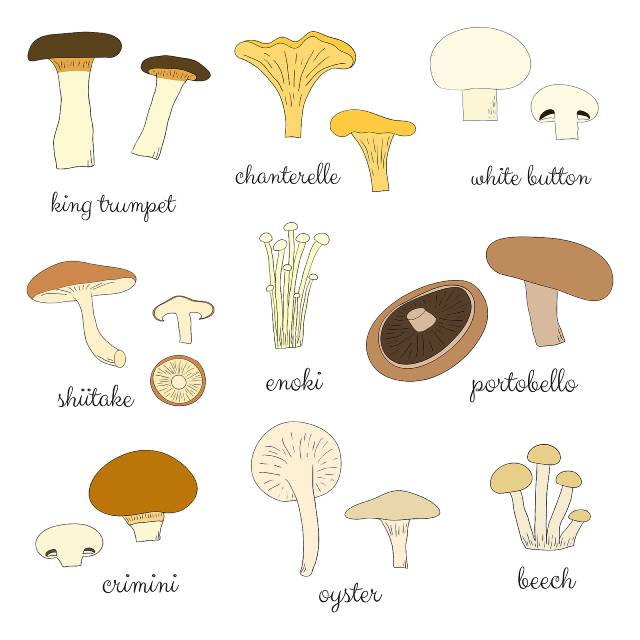
Mushrooms are unique because they are neither animals nor plants. Instead, they belong to their very own category—fungi (18).
People around the world use mushrooms to flavor dishes due to their taste-enhancing ‘umami’ properties. Furthermore, they offer a distinctive and broad range of common—and lesser-known nutrients—for very few calories.
Some mushrooms are also enriched with vitamin D through UV light exposure. These mushrooms are significant dietary sources of vitamin D (19).
- Notable examples: Button mushrooms, cremini, enoki, portobello, shiitake
- Lesser-known options: Lion’s mane, morel, matsutake
- Key nutrients: B vitamins, manganese, phosphorus
Learn more: 18 Popular Types of Mushrooms: Nutrition & Characteristics
16) Nutrient-Dense Foods
The term “nutrient-dense” refers to foods that provide a high level of beneficial nutrients in a single serving, relative to their caloric content.
Some examples of nutrient-dense foods include leafy greens, shellfish, and organ meats.
- Notable examples: Spinach, oysters, liver
- Lesser-known options: Cockles, conch, sweet potato leaves
- Key nutrients: Variable
Learn more: 14 Nutrient-Dense Foods To Consider
17) Nuts
There are many different types of nuts, but not all nuts are true tree nuts botanically. For example: almonds and pine nuts are technically seeds, and peanuts are legumes.
However, the foods we refer to as ‘nuts’ tend to be rich sources of essential nutrients and phytonutrients. In addition, most nuts are a significant source of polyunsaturated fatty acids.
A 2023 systematic review and 2022 umbrella review of systematic reviews demonstrated that nut consumption is associated with reduced cardiovascular mortality and all-cause mortality in long-term observational trials (20, 21).
- Notable examples: Almonds, hazelnuts, peanuts, walnuts
- Lesser-common options: Baru nuts, hickory nuts, pili nuts
- Key nutrients: Copper, magnesium, manganese, vitamin E
Learn more: 20 Types of Nuts and Their Nutritional Values
18) Oily Fish
You may be thinking that oily fish belongs to the broader ‘seafood’ food group, which is true. However, it’s an especially important food choice due to its high levels of omega-3.
Dietary recommendations from the Dietary Guidelines for Americans, the American Heart Association, and the UK’s National Health Service all recommend eating fish, partly due to their omega-3 provision (22, 23, 24).
In addition to its omega-3 content, oily fish tends to be an excellent source of other important nutrients, including protein, vitamin B12, and selenium.
- Notable examples: Herring, mackerel, salmon, sardines, trout
- Lesser-common options: Anchovies, sprats
- Key nutrients: Omega-3 fatty acids, selenium, vitamin B12
Learn more: 15 Oily Fish High In Omega-3 Fatty Acids
19) Plant-Based Proteins
Plant-based proteins are not a unique food category, and they merge with other types of food, such as legumes and nuts.
However, there has been a surge of interest and rapid increase in plant-based protein products over recent years, so it is important to categorize them accurately.
Some of the most famous of these products include branded items like ‘Beyond Meat’ and ‘Quorn,’ both of which market several products as ‘meat alternatives.’
- Notable examples: Beyond Meat, Mycoprotein, soy protein, tofu
- Lesser-common options: Seitan
- Key nutrients: Fiber, protein
Learn more: 30 of the Best Plant-Based Protein Sources
20) Processed Foods
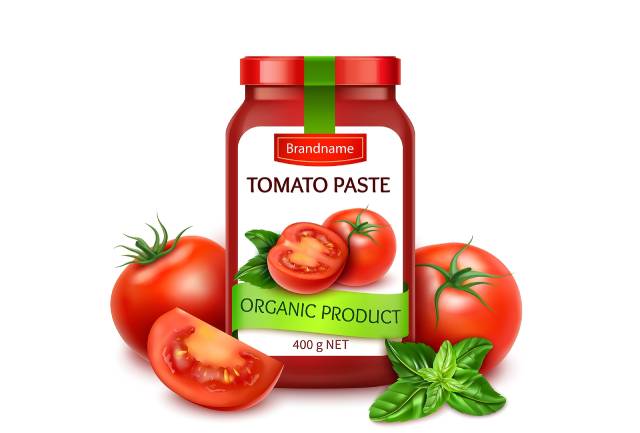
‘Processed foods’ sometimes get a bad rap, but the truth is that most foods have been processed to some extent.
For instance, cheese is processed, tomato puree is processed, and foods like guacamole and peanut butter are processed too.
However, it is worth pointing out that minimally processed foods don’t have the same associations with poor health outcomes as ‘ultra-processed foods’ (25, 26).
- Notable examples: Cheese, chocolate, peanut butter, tomato paste
- Lesser-common options: Anchovy paste, ginger paste, goose fat
- Key nutrients: Variable
Learn more: 20 Reasonably Healthy Processed Foods
21) Seafood
Did you know fish consumption may benefit our health? Two umbrella reviews of systematic reviews and meta-analyses, published in 2020 and 2023, found that fish intake is associated with a lower risk of multiple health conditions, including heart disease and all-cause mortality (27, 28).
However, it is not only fish that provides beneficial nutrients—shellfish and sea vegetables do too.
Shellfish like crab, lobster, mussels, and oysters provide a broad range of vitamins and minerals alongside protein for very few calories.
Additionally, sea vegetables are a rich source of minerals, particularly iodine.
- Notable examples: Cod, crab, oysters, salmon, seaweed
- Lesser-common options: Conch, eel
- Key nutrients: B vitamins, omega-3 fatty acids, selenium, zinc
Learn more: 32 Healthy Types of Seafood: Nutrition, Benefits, and More
22) Seeds
Seeds are the reproductive part of plants, containing every nutrient the new plant requires to grow.
Not surprisingly, they tend to be very nutrient-dense, offering a range of essential vitamins and minerals.
In fact, seeds offer a little bit of everything nutritionally, also providing fiber, protein, and a range of healthy fats.
- Notable examples: Chia, sesame, sunflower
- Lesser-common options: Lotus, poppy, watermelon
- Key nutrients: Copper, magnesium, manganese, selenium, vitamin E
Learn more: 12 Types of Edible Seeds: Nutrition Facts & Characteristics
23) Ultra-processed Foods
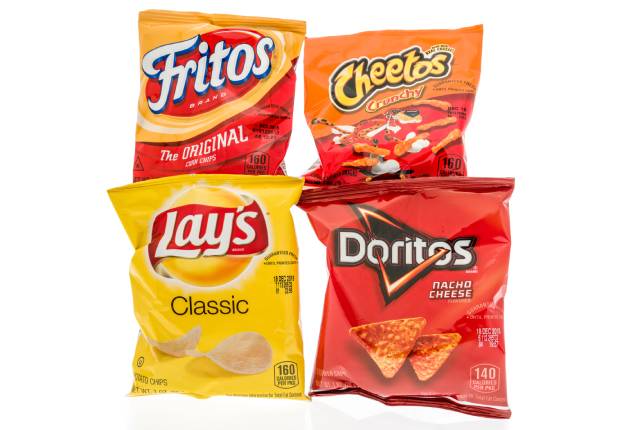
As previously mentioned, there is a difference between ‘processed’ and ‘ultra-processed’ foods. Whereas the former can be as simple as cheese, guacamole, or tomato paste, ultra-processed foods contain a wide variety of refined ingredients.
According to the NOVA food classification system, ultra-processed foods are “formulations of ingredients, mostly of exclusive industrial use, typically created by series of industrial techniques and processes (hence ‘ultra-processed’)” (29).
These food products are typically made by multi-national food corporations and include packaged foods like potato chips, candy, donuts, etc.
A recent inpatient randomized controlled trial demonstrated that higher ultra-processed food consumption leads to higher energy intake, which highly correlated with weight gain (30).
Healthy dietary patterns generally contain a higher proportion of whole foods, and a lower intake of ultra-processed foods.
That said, we should judge ultra-processed foods by the specific food rather than as an entire group. For instance, almond milk and a deep-fried, ready-to-eat dessert are unlikely to have the same health effects.
- Notable examples: Cheetos, Mars confectionary, donuts
- Lesser-known options: Meat alternatives, plant milks
- Key nutrients: Variable
Learn more: 5 Reasons To Limit Ultra-Processed Foods
24) Vegetables
There are hundreds of different vegetables, so there should be something to suit all taste preferences.
The most common vegetables include broccoli, cabbage, carrots, onions, and potatoes.
While the vitamin and mineral content of vegetables varies, most vegetables offer a good source of fiber, vitamin C, vitamin K, and potassium for few calories.
- Notable examples: Cabbage, carrots, kale, potatoes
- Lesser-common options: Artichoke, kohlrabi
- Key nutrients: Fiber, potassium, vitamin C, vitamin K
Learn more: 60 Types of Vegetables and Their Nutrition Facts
Final Thoughts
As shown in this guide, there are numerous different foods that we can consume as part of our diet.
Almost all of these foods have their own unique nutrients and potential pros and cons.
Lastly, for anyone looking for food options to fit specific aims, such as increasing protein intake, the following guide may be useful:

